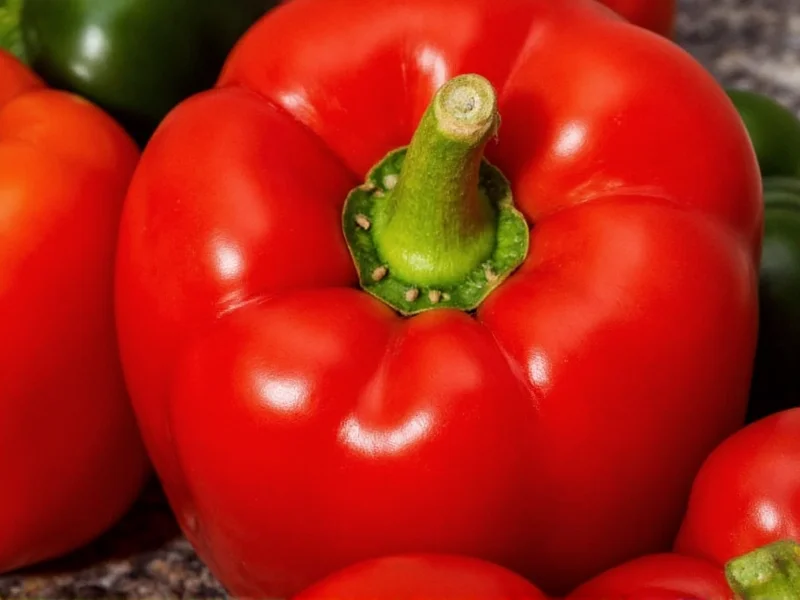Understanding exactly how hot is a fresno pepper requires context within the broader spectrum of chili pepper heat. These versatile peppers offer more than just heat—they bring bright, slightly fruity flavor notes that make them popular in both green and red varieties. While their heat range overlaps significantly with jalapeños, several factors influence their actual spiciness.
Decoding the Scoville Scale for Fresno Peppers
The Scoville scale measures chili pepper heat by determining capsaicin concentration—the compound responsible for that burning sensation. When evaluating how hot are fresno peppers compared to jalapenos, it's essential to understand that both peppers occupy similar territory on this scale, but with important distinctions.
Fresno peppers demonstrate notable variability in their heat levels:
- Green Fresnos (immature): Typically 2,500-6,000 SHU
- Red Fresnos (fully mature): Often reach 5,000-10,000 SHU
- Environmental factors like soil conditions and climate significantly impact final heat
- Individual pepper variation exists even within the same plant
This natural variability explains why some cooks find Fresnos consistently milder than jalapeños while others encounter specimens that pack more punch. The maturation process particularly affects heat development—red Fresnos generally deliver more intense heat than their green counterparts.
| Pepper Variety | Scoville Heat Units | Heat Comparison |
|---|---|---|
| Fresno Pepper (Green) | 2,500-6,000 | Mild to medium, often slightly milder than jalapeño |
| Fresno Pepper (Red) | 5,000-10,000 | Medium, comparable to or slightly hotter than jalapeño |
| Jalapeño Pepper | 2,500-8,000 | Medium, benchmark for comparison |
| Serrano Pepper | 10,000-23,000 | Medium-hot, significantly hotter than Fresno |
| Habanero Pepper | 100,000-350,000 | Very hot, exponentially hotter than Fresno |
Fresno Pepper Characteristics Beyond Heat
When considering fresno pepper heat level scoville measurements, remember that heat isn't their only attribute. These peppers offer distinctive qualities that influence their culinary applications:
- Flavor profile: Bright, slightly sweet with berry-like notes, especially in red varieties
- Texture: Thinner walls than jalapeños, making them excellent for pickling
- Appearance: Conical shape, 2-3 inches long, transitioning from green to vibrant red as they mature
- Versatility: Work well fresh, roasted, pickled, or dried (though less common dried than jalapeños)
Practical Applications in Cooking
Understanding what does a fresno pepper taste like helps determine appropriate culinary uses. Their balanced heat and flavor profile make them suitable for various applications:
- Salsas and relishes: Their thinner walls break down nicely in fresh preparations
- Pickling: Excellent candidate for refrigerator pickles due to their shape and texture
- Roasted applications: Adds depth to sauces, soups, and stews when roasted
- Garnishes: Thin slices provide attractive color contrast with moderate heat
- Substitutions: Can replace jalapeños when slightly milder heat is desired, or serranos when less heat is preferred
When working with fresno pepper vs serrano heat comparisons, remember that serranos typically deliver 2-3 times more heat. If substituting Fresnos for serranos, you may need to increase quantity or remove seeds/membranes from the Fresnos to achieve similar heat levels.
Safety and Handling Considerations
Even with their moderate heat level, proper handling of Fresno peppers prevents discomfort:
- Always wear gloves when handling, especially when working with multiple peppers
- Avoid touching your face, particularly eyes, during preparation
- Remove seeds and white membranes (placenta) for milder heat—this is where most capsaicin concentrates
- Wash hands thoroughly with soap after handling, even when wearing gloves
- Use separate cutting boards for hot peppers to prevent cross-contamination
When determining are red fresno peppers hotter than green, the answer is generally yes—mature red peppers develop more capsaicin as they ripen. However, individual growing conditions can sometimes produce exceptions to this rule.
Maximizing Flavor in Your Dishes
To get the most from Fresno peppers in your cooking:
- Use green Fresnos in fresh salsas where you want moderate heat without overwhelming flavor
- Choose red Fresnos for roasted applications where their sweetness complements the char
- Balance their heat with dairy (sour cream, cheese) or starches (rice, beans)
- Pair with complementary flavors like lime, cilantro, garlic, and smoked ingredients
- When substituting in recipes, start with equal amounts to jalapeños, then adjust to taste
Understanding the precise fresno pepper scoville units range helps manage expectations in recipe development. Their position between milder jalapeños and hotter serranos makes them an excellent transitional pepper for those expanding their heat tolerance.











 浙公网安备
33010002000092号
浙公网安备
33010002000092号 浙B2-20120091-4
浙B2-20120091-4